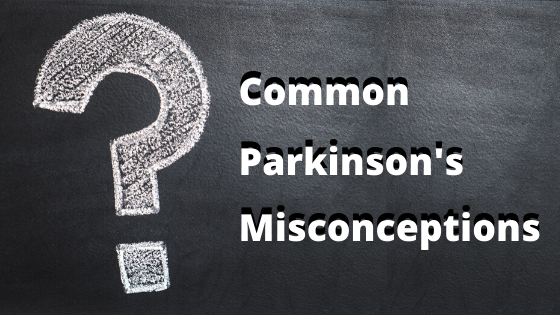
Unfortunately many well meaning people can develop misconceptions when it comes to Parkinson’s disease and Parkinson’s symptoms, so below we have compiled a list of the most common ones to help educate on the truth of Parkinson’s.
Misconception #1: All Parkinson’s symptoms are visible.
Truth: While there are visible symptoms of Parkinson’s, there are non-visible symptoms of Parkinson’s disease as well. Non-visible symptoms include depression, dementia, anxiety, difficulty swallowing or chewing, increased salivation, low blood pressure, and fatigue.
Misconception #2: Only elderly people are diagnosed with Parkinson’s disease.
Truth: While most people are diagnosed with Parkinson’s when they are above the age of 50, some people will be diagnosed before this. According to Johns Hopkins Medicine, anyone diagnosed with Parkinson’s at an age “younger than 50 is considered young-onset Parkinson’s, or YOPD.” And according to the American Parkinson Disease Association, “About 10%-20% of those diagnosed with Parkinson’s disease are under age 50, and about half of those are diagnosed before age 40.”
Misconception #3: Parkinson’s symptoms can rapidly progress in a few days or weeks.
Truth: While symptoms can fluctuate, the typical progression of Parkinson’s is slow. According to the Mayo Clinic “In most cases, symptoms change slowly, with substantive progression taking place over the space of many months or years.”If your Parkinson’s symptoms worsen over a few days or weeks, it is important to see a doctor and identify the underlying cause of why this is happening. Common causes can be stress, different medications, lack of sleep, and dehydration.
Misconception #4: Parkinson’s disease medications can make your condition progress faster or cause symptoms.
Truth: There is no link between any Parkinson’s medication and an increase in PD’s progression. A large clinical trial done at Columbia University showed that when two groups of people were given either levodopa (a common medication for Parkinson’s), or a placebo (a sugar pill), the group that received levodopa were better off at the end of the study compared to those that received the placebo. This study, as well as many others, have consistently shown that Parkinson’s medication helps manage symptoms of PD and does not cause them.
Misconception #5: If someone shows no visible symptoms of Parkinson’s, they are doing well.
Truth: This common misconception is incorrect for two reasons. The first reason being, as we discussed earlier, not all symptoms of Parkinson’s are visible. And secondly, symptoms of Parkinson’s can fluctuate, so while someone’s symptoms may appear mild at one point in time, this may not always be the case.
Misconception #6: Besides medication, there isn’t anything else you can do for PD.
Truth: There is a lot besides medication that can help with PD. Exercise and staying active can help manage the motor and non-motor symptoms of Parkinson’s and finding friends and community to lean on can help with managing these symptoms as well. If you are looking for Parkinson’s exercise classes and a community of people facing PD, check out our wellness programs.
Misconceptions #7: Parkinson’s disease is the same for every person.
Truth: Parkinson’s disease has many different motor and non-motor symptoms that can fluctuate and differ from person to person. So, while some symptoms may be present in multiple people, Parkinson’s disease will never be the same for every person.
learn more about Parkinson’s and avoid future misconceptions below:
Click the button below and receive our Parkinson’s resource pack featuring multiple videos, articles and more from leading Parkinson’s doctors on everything you need to know for you or a loved one to live well with Parkinson’s.
PFNCA provides Parkinson’s exercise classes live, in person and online. You can improve your quality of life by managing your symptoms in a fun and supportive environment with others facing Parkinson’s.



